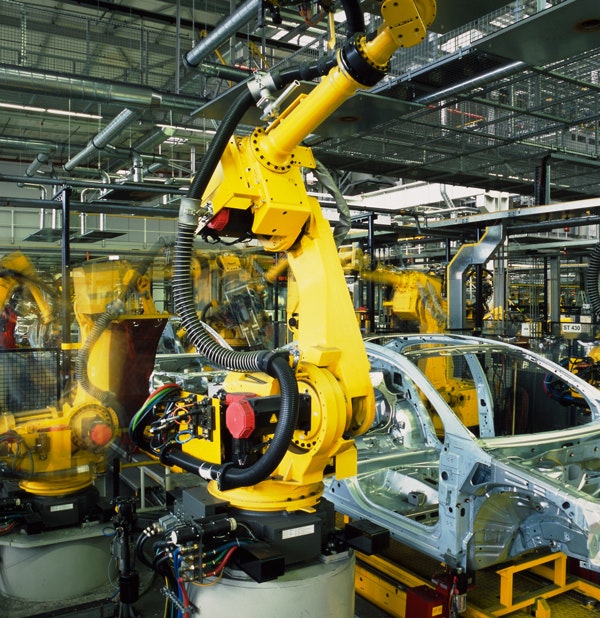Pervasive Myths About Immigrants
As Americans grow in their unease about the economy and their communities, immigrants become a lightning rod. Despite studies that show that a flow of workers into the country helps the economy, immigrants often face the blame for what ails our society.
 A counter-protester holds a sign reading "Pres. Trump Build That Wall." (Robyn Beck/AFP/Getty Images)
A counter-protester holds a sign reading "Pres. Trump Build That Wall." (Robyn Beck/AFP/Getty Images)
If you want to take America’s temperature, few issues are more revealing than immigration. Americans who feel anxious or insecure about the economy or their community are quick to blame a flow of new people into the United States. They do so despite consistent evidence that immigrants do not cause their problems.
Unfortunately, these concerns are as old as the Founding Fathers. While the Declaration of Independence argued for the American colonies’ right to populate through immigration, Benjamin Franklin expressed misgivings about the German immigrants to Pennsylvania. He complained that they would never assimilate to the culture and customs established by the English colonists.
It is easy to laugh at his prediction today: Germans are America’s largest ethnic group. All of these citizens, presumably, are as American as their neighbors of other origins.
Still, it is disheartening to realize that nearly identical arguments have been made about successive groups of immigrants since Franklin’s time. These arguments correspond more with broader social and economic anxieties than with particular characteristics of the immigrant groups to which they are directed.
It is disheartening to realize that nearly identical arguments have been made about successive groups of immigrants since Franklin’s time. These arguments correspond more with broader social and economic anxieties than with particular characteristics of the immigrant groups to which they are directed.
Don’t blame the economy
Animosity toward immigrants and anxiety about immigration levels correspond particularly to two phenomena: politicians discussing immigration in negative terms, or a poor economic outlook.
The culprit couldn’t be the economy because it strengthened significantly in 2017. True, many Americans feel that they personally have not recovered from the Great Recession. And wage growth is tepid, while millennials are predicted to be the first generation in U.S. history that will be worse off than their parents. Yet our economy is running at full employment. GDP growth has been higher lately. And consumer confidence has increased.
The culprit is instead political rhetoric. Politicians at all levels make negative statements about immigration, but the 2016 presidential election was a low point in recent years for rhetoric on immigration and immigrants themselves. Unfortunately, negative statements continue, increasing public anxiety that eventually gets released against immigrants.
…the 2016 presidential election was a low point in recent years for rhetoric on immigration and immigrants themselves. Unfortunately, negative statements continue, increasing public anxiety that eventually gets released against immigrants.
The red-hot language has created a storm of anger towards immigrants. Facts do not support the desire to blame them, but attitudes about immigration tend to reflect our collective psyche. We want someone to blame, especially if we feel that no one else is below us on the economic ladder.
That frustration often leads some to believe that the solution is to drastically reduce the number of immigrants we allow annually into the U.S. They also want to reduce the current undocumented population through stronger interior enforcement and deportation efforts.

The frustration may be real, but immigrants are not the source of the problem. Take wages. Take-home pay may have grown at a paltry rate since the 2008 financial crisis, but economic studies of the effect of immigrants on wages show an incredibly modest negative effect on low-wage workers in the short run only. Actually, the impacted low-wage workers are often recent immigrants, not native-born American workers.
Economic studies of the effect of immigrants on wages show an incredibly modest negative effect on low-wage workers in the short run only. Actually, the impacted low-wage workers are often recent immigrants, not native-born American workers.
This isn’t to say there is no pain associated with lackluster wage growth. But many factors contribute to the slow and unsatisfactory growth, particularly among lower-skilled workers. The solutions lie in domestic policy reforms that encourage economic growth that in turn drives wage growth. Restricting immigration is not one of those policies, and continually directing energy towards this as a solution is wasting opportunities to address the real roots of the problem, such as declining worker mobility and a lower rate of new business formation.
 Robots working on cars on an assembly line
Robots working on cars on an assembly line
The truth is that American workers have more to fear from technology than from immigration. Technology has dramatically increased the productivity of the American worker since the early 2000s. Manufacturing is an excellent example. Productivityin manufacturing increased so much between 2000 and 2010 that the U.S. would have required an additional 20.9 million workers if productivity had remained steady since 2000. Because of the dramatic increase in productivity, the U.S. manufacturing sector only required 12.1 million workers in 2010. Continually acquiring new skills will alleviate the anxiety that workers understandably feel.
The truth is that American workers have more to fear from technology than from immigration.
And here’s another reality: studies show that immigrants do not steal jobs from Americans. America’s Advantage: Handbook on Immigration and Economic Growth, a recent Bush Institute report, reveals that Immigrants are more likely than native-born workers to create jobs. They start businesses at nearly twice the rate of native-born Americans and are more likely to be self-employed. Immigrant-owned businesses with employees other than the owner employ, on average, 11 additional workers.
Of course, the common misperception is that immigrants do take away jobs. This only adds to the anguish over losing a job and promotes fear and hostility to immigrant labor.
The labor market, however, is not a fixed pie. A new worker like an immigrant who enters the labor market does not need to displace a currently-employed worker in order to find a position. In fact, immigrants often are not perfect substitutes for native-born American workers and are therefore not competing directly with each other for the same positions.
Their skills typically complement native-born workers’ skills, seeking positions where there is a scarcity of native born labor. This complementarity happens for immigrant workers at all skill levels.
A new worker…does not need to displace a currently-employed worker in order to find a position. In fact, immigrants often are not perfect substitutes for native-born American workers and are therefore not competing directly with each other for the same positions.
And immigrants aren’t driving the budget deficit
Another common myth is that immigrants put a strain on the federal budget. Here, too, the reality is different. Immigrants are not the strain on the federal budget they are made out to be.
Consider entitlement programs like Medicaid, Medicare, and Social Security, which are the biggest items in the federal budget. Immigrants cannot unduly burden these programs because they are limited in their access to them.
Legal immigrants, for example, do not qualify for federal entitlement benefits for five years after their arrival in the U.S. Once they do qualify, they only use them at lower rates than native-born Americans. And undocumented immigrants cannot receive any federal entitlement benefits, although their U.S.-citizen children do qualify.
So, even with millions of immigrants in the U.S., they simply cannot use enough benefits to strain the budget. The fact that they, overall, add value to the economy reduces or negates any fiscal burden they might put on the federal budget.

The fiscal costs they do impose are mostly borne at the state and local level. As an example, immigrants without health insurance are likely to burden public hospitals, just as native-born Americans in the same situation are likely to do.
Our country undoubtedly faces challenges over the next several years — fiscal irresponsibility, the growth of entitlements, technological disruption in the workforce, and many more. These problems require tough solutions.
But the problems are not about immigration. Instead, the U.S. owes a great deal to the immigrants who built America and made our nation great. That’s the ultimate reality we should remember.
-
Previous Article For Children, the Immigrant Experience Begins in School An Essay by Anne Wicks, Ann Kimball Johnson Director of the Education Reform Initiative at the Bush Institute
-
Next Article Too Many Immigrants? No, We Need More An Essay by Pia Orrenius, Vice President and Senior Economist of the Federal Reserve Bank of Dallas


